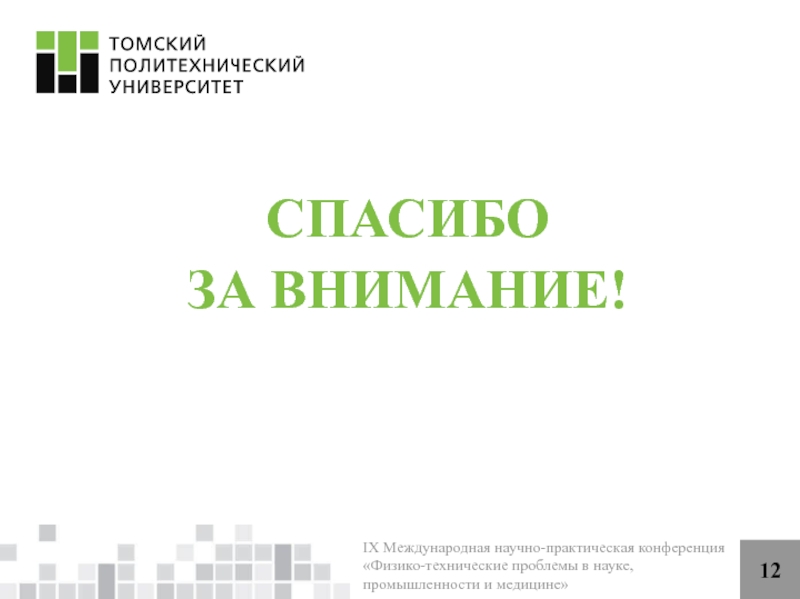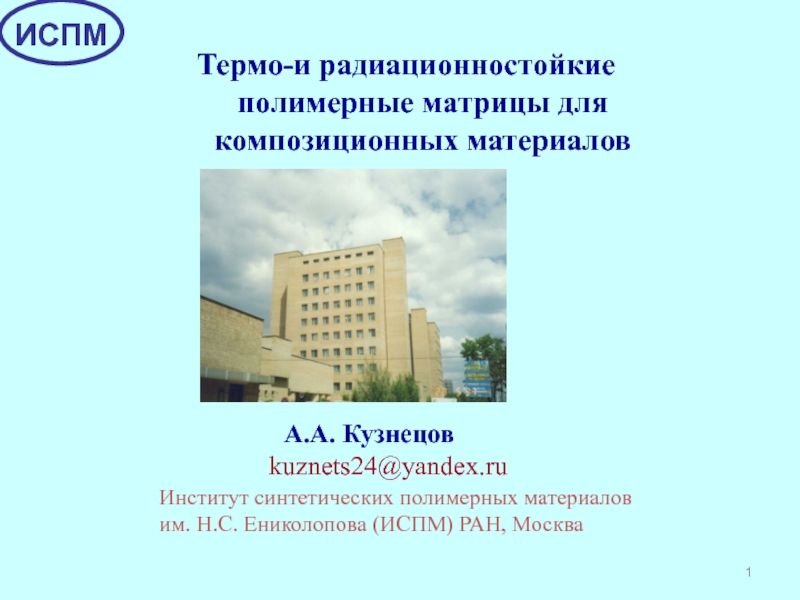- Главная
- Разное
- Дизайн
- Бизнес и предпринимательство
- Аналитика
- Образование
- Развлечения
- Красота и здоровье
- Финансы
- Государство
- Путешествия
- Спорт
- Недвижимость
- Армия
- Графика
- Культурология
- Еда и кулинария
- Лингвистика
- Английский язык
- Астрономия
- Алгебра
- Биология
- География
- Детские презентации
- Информатика
- История
- Литература
- Маркетинг
- Математика
- Медицина
- Менеджмент
- Музыка
- МХК
- Немецкий язык
- ОБЖ
- Обществознание
- Окружающий мир
- Педагогика
- Русский язык
- Технология
- Физика
- Философия
- Химия
- Шаблоны, картинки для презентаций
- Экология
- Экономика
- Юриспруденция
Defect in solid презентация
Содержание
- 1. Defect in solid
- 2. 2 Solids consist of crystal. Crystals
- 3. 3 Defects occur in a solid at
- 4. 4 Point defects To point
- 5. 5 Defect of Schotky and Frenkel
- 6. 6 Number of defect of Schotky The
- 7. 6 Number of defect of Frenkel The
- 8. 7 Line defect- dislocation The experimental data
- 9. 8 IX Международная научно-практическая конференция «Физико-технические проблемы
- 10. 9 IX Международная научно-практическая конференция «Физико-технические проблемы
- 11. Результаты исследований 10
- 12. Заключение 11 IX Международная научно-практическая конференция «Физико-технические
- 13. 12 СПАСИБО ЗА ВНИМАНИЕ! IX Международная научно-практическая конференция «Физико-технические проблемы в науке, промышленности и медицине»
Слайд 22
Solids consist of crystal. Crystals are described by scientists using an
The real crystal are not perfect. A real crystal always has a large number of imperfections in the lattice. One can reduce crystal defect considerably, but can never eliminate them entirely.
Model of perfect crystal
What is a defect in a solid?
Слайд 33
Defects occur in a solid at any temperature. The number of
Слайд 44
Point defects
To point defects include vacancies, atoms between the nodes
Vacancy – An atom missing from regular lattice position. Vacancies are present invariably in all materials.
An impurity is a foreign atom that does not form a chemical compound in the crystal lattice
Point defect-vacancy
Point defect-impurity
Слайд 55
Defect of Schotky and Frenkel
Frenkel defect: anion vacancy-interstitial cation pair
When the
A pair of one cation and one anion can be missed from an ionic crystal. Such a pair of vacant ion sites is called Schotky defect.
In crystals, an ion displaced from a regular site to an interstitial site is called Frenkel deffect.
Schottky defect: anion -cation vacancy pair
Слайд 66
Number of defect of Schotky
The number of vacancies (defect of Shotky)
N-number of atom;
n- number of vacancies;
kB- constant of Boltzman, 1,38*10-23 J /K;
T- temperature of solid;
Ev- energy of formation defect of Shotky;
Слайд 76
Number of defect of Frenkel
The number of defect of pair Frenkel
N-number of atom;
N’- number of interstitial by can take up free atom;
n- number of defects pair of Frenkel;
kB- constant of Boltzman, 1,38*10-23 J /K;
T- temperature of solid;
Ef- energy of formation pair of Frenkel.
Слайд 87
Line defect- dislocation
The experimental data do not show that the observed
The two types of dislocations are:
Edge dislocation
Screw dislocation
The experimental data do not show that the observed values of the yield strength are much smaller than the theoretical values. To explain this effect, a new type of defect- dislocation.
Слайд 98
IX Международная научно-практическая конференция «Физико-технические проблемы в науке, промышленности и медицине»
Результаты
Рисунок 4 – Фазовые переходы в системе цирконий-водород с никелевым покрытием в процессе насыщения водородом при температуре 550 °С
Слайд 109
IX Международная научно-практическая конференция «Физико-технические проблемы в науке, промышленности и медицине»
Результаты
Рисунок 5 – Спектр термостимулированной десорбции водорода из образца циркониевого сплава после гидрирования в газовой атмосфере
Слайд 12Заключение
11
IX Международная научно-практическая конференция «Физико-технические проблемы в науке, промышленности и медицине»
Исследовано
Скорость поглощения водорода циркониевым сплавом Э110 увеличивается в 16,8 раза при повышении температуры;
При температуре 350 °С гидрирование приводит только к фазовому переходу α-циркония к δ-гидриду цирконию, тогда как при 450 и 550 °С процесс протекает с образованием метастабильной тетрагональной фазы гидрида циркония;
При температуре 522-540 °C наблюдается процесс диссоциации гидридов в циркониевом сплаве Э110;
При дальнейшем повышении температуры происходит увеличение β-фазы циркония из-за переходной фазы α → β циркония.


















